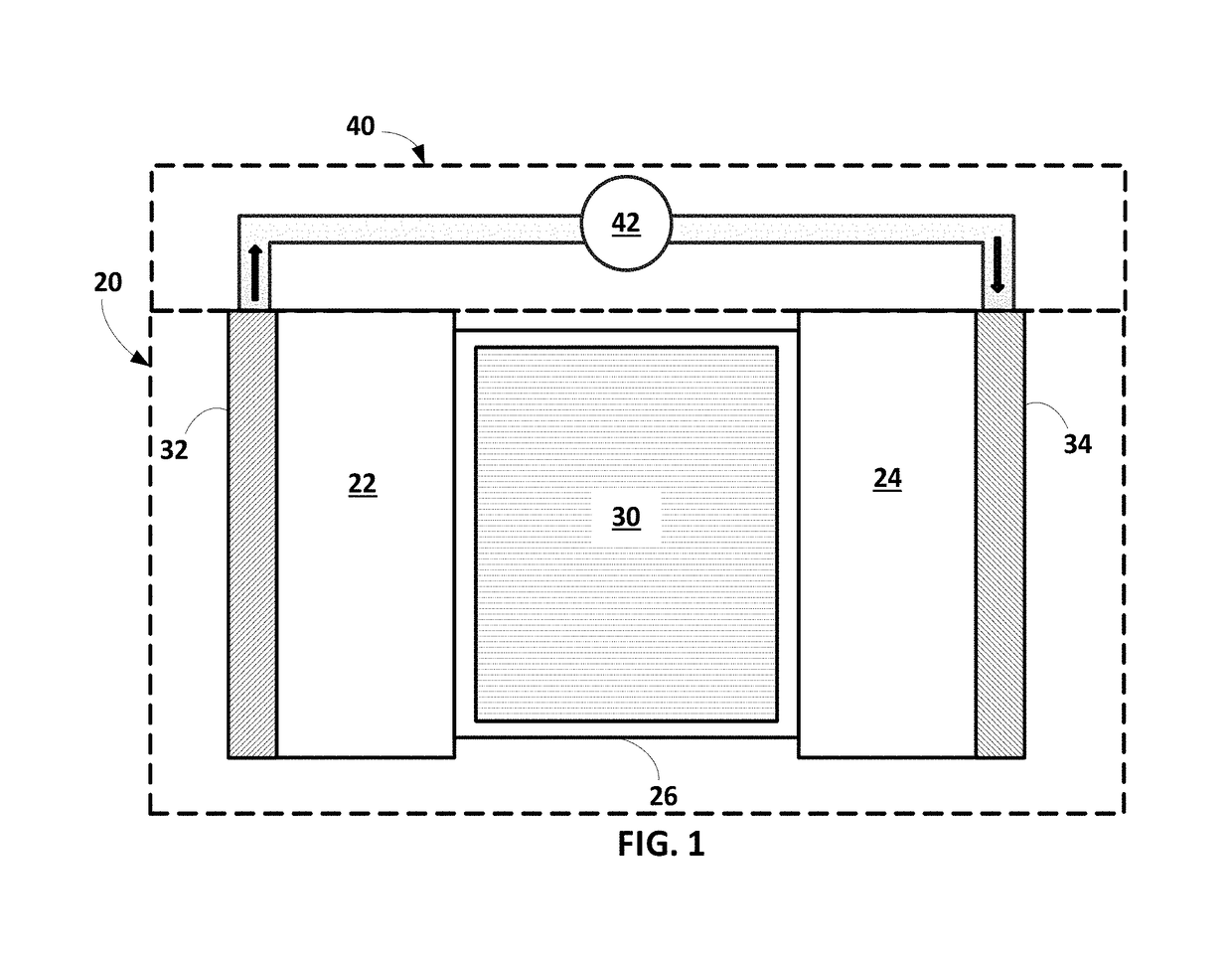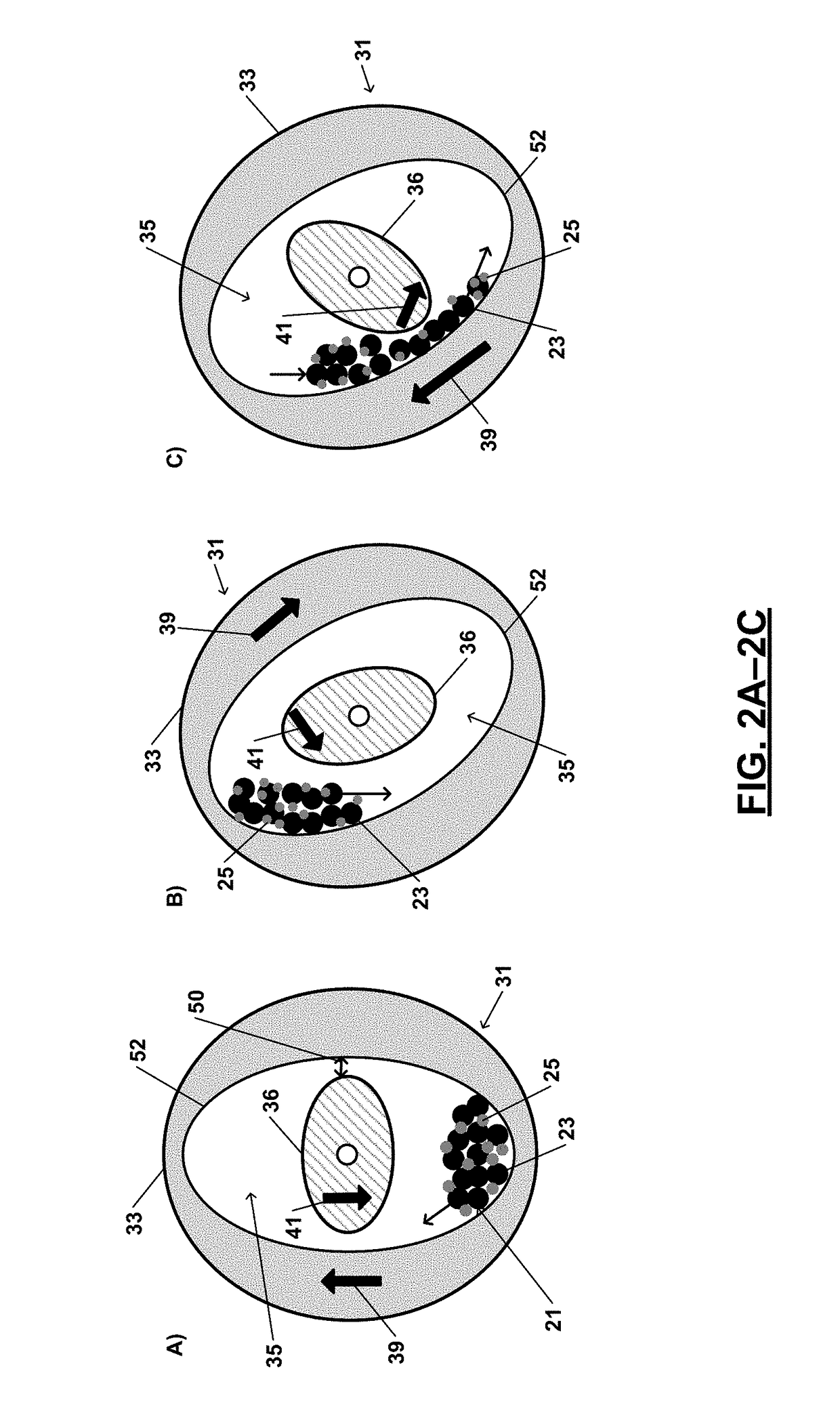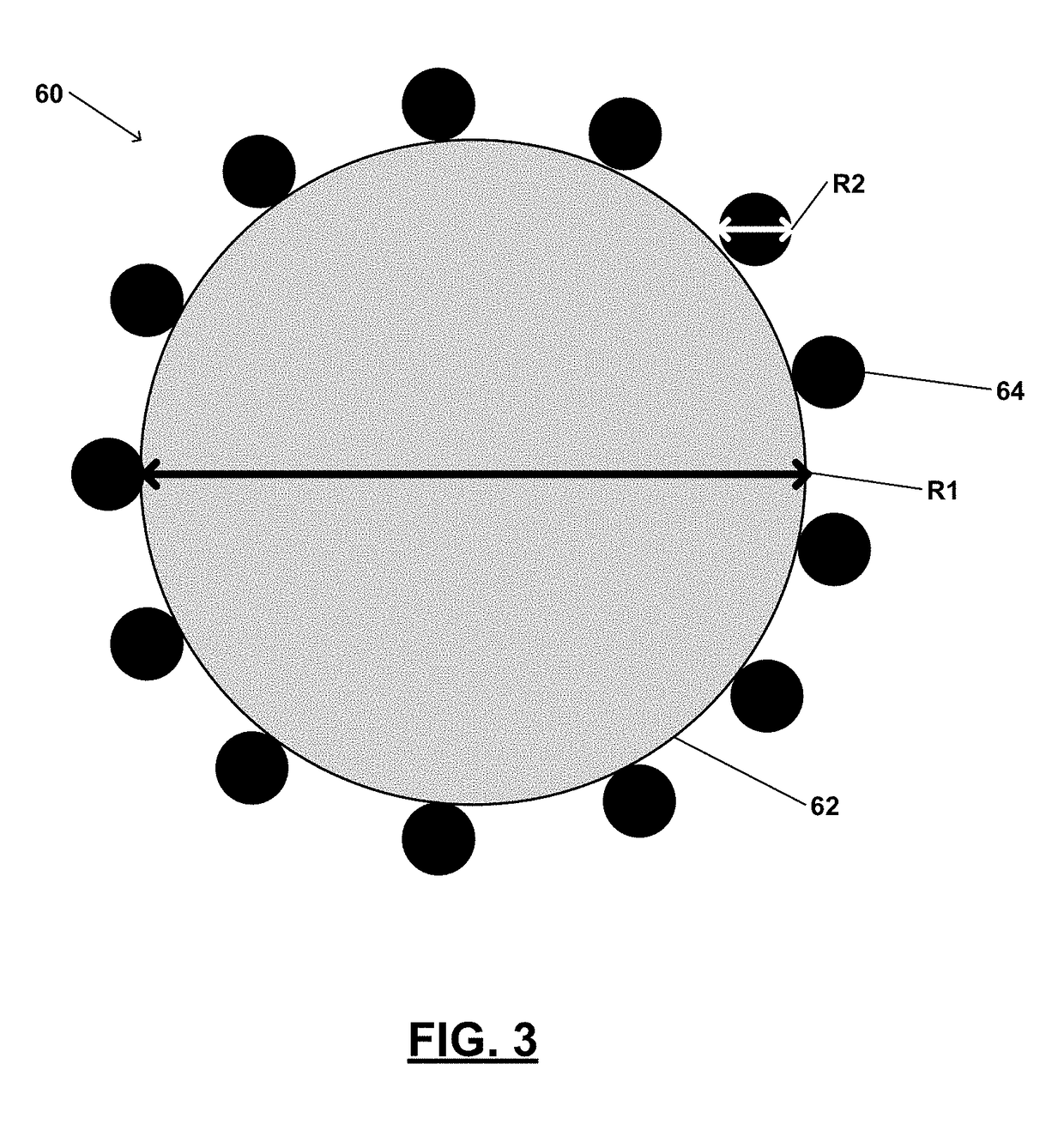Methods of making electroactive composite materials for an electrochemical cell
a technology of composite materials and electrochemical cells, applied in cell components, inorganic powder coatings, batteries, etc., can solve the problems of physical damage to the electrode, significant drawbacks of current anode materials comprising silicon, or similar large volume expansion materials, such as tin or germanium, and achieve specific capacity, improve cycling performance, and reduce capacity fade
- Summary
- Abstract
- Description
- Claims
- Application Information
AI Technical Summary
Benefits of technology
Problems solved by technology
Method used
Image
Examples
example 1
[0077]In various instances, the electroactive composite material 60 may comprise a first particle 62 comprising graphite and having a first average diameter (R1) that is greater than or equal to about 1 μm to less than or equal to about 50 μm; and a second particle 64 comprising silicon (Si) and having a second average diameter (R2) that is greater than or equal to about 20 nm to less than or equal to about 200 nm. The particle mixture includes 80 weight % of the graphite and 20 weight % of silicon (Si). As described above, the particle mixture is introduced into a dry-coating device (e.g., Theta Composer) including a rotatable vessel defining a cavity and a rotor disposed within the cavity. The vessel is rotated at a first speed that is greater than or equal to about 20 rpm to less than or equal to about 100 rpm. The rotor is rotated at a second speed that is greater than or equal to about 3000 rpm to less than or equal to about 5000 rpm. The vessel and rotor are rotated for a time...
example 2
[0081]In various instances, the electroactive composite material 90 may comprise a first particle 92 comprising high energy lithium manganese nickel cobalt oxide (LiNiMnCoO2) and having a first average diameter (R1) that is greater than or equal to about 5 μm to less than or equal to about 50 μm; and a second particle 94 comprising graphite and having a second average diameter (R2) that is greater than or equal to about 1 μm to less than or equal to about 50 μm. The particle mixture includes 80 weight % of the lithium manganese nickel cobalt oxide (LiNiMnCoO2) and 20 weight % of graphene platelet. The particle mixture is introduced into a dry-coating device (e.g., Theta Composer) including a rotatable vessel defining a cavity and a rotor disposed within the cavity. The vessel is rotated at a first speed that is greater than or equal to about 50 rpm to less than or equal to about 100 rpm. The rotor is rotated at a second speed that is greater than or equal to about 3000 rpm to less t...
PUM
| Property | Measurement | Unit |
|---|---|---|
| average diameter | aaaaa | aaaaa |
| average diameter | aaaaa | aaaaa |
| thickness | aaaaa | aaaaa |
Abstract
Description
Claims
Application Information
 Login to View More
Login to View More - R&D
- Intellectual Property
- Life Sciences
- Materials
- Tech Scout
- Unparalleled Data Quality
- Higher Quality Content
- 60% Fewer Hallucinations
Browse by: Latest US Patents, China's latest patents, Technical Efficacy Thesaurus, Application Domain, Technology Topic, Popular Technical Reports.
© 2025 PatSnap. All rights reserved.Legal|Privacy policy|Modern Slavery Act Transparency Statement|Sitemap|About US| Contact US: help@patsnap.com



